Mohs surgery is an advanced treatment procedure for skin cancer that offers the highest cure rate (up to 99%, even if the skin cancer has been previously treated). This procedure is state-of-the-art treatment in which the highly-trained physician serves as surgeon, pathologist and reconstructive surgeon. It relies on the accuracy of a microscope to trace and ensure removal of skin cancer down to its roots. This technique allows dermatologists, trained in Mohs surgery, to see beyond the visible disease, and to precisely identify and remove the entire tumor, leaving healthy tissue unharmed for optimal cosmetic outcomes. This procedure is most often used in treating two of the most common forms of skin cancer: basal cell carcinoma and squamous cell carcinoma. The cure rate for Mohs surgery is the highest of all treatments for skin cancer–up to 99 % even if other forms of treatment have failed. This procedure, the most exact and precise method of tumor removal, minimizes the chance of cancer regrowth and lessens the potential for scarring and disfigurement.
The highly-trained surgeons that perform Mohs surgery at Ada West Dermatology are specialists both in dermatology and pathology. With their extensive knowledge of the skin and unique pathological skills, they are able to remove only diseased tissue, preserving healthy tissue and minimizing the cosmetic impact of the surgery. Dr. Winchester (Mayo Clinic), Dr. Thorpe (Zitelli Clinic), and Dr. Boothman (Surgical Dermatology Group) are fellowship trained in programs recognized and approved by the American College of Mohs Surgery. The American College of Mohs Surgery (ACMS) was founded by Dr. Frederic Mohs himself, who developed the ground-breaking Mohs sugery procedure.
The highly-competitive ACMS-approved fellowship training programs are the de facto gold standard for Mohs surgeon training and are prestigious and significantly more rigorous than other Mohs certifications such as those offered by the ASMS. Fellows-in-training undergo months of extensive, hands-on direction from highly qualified instructors. By choosing an ACMS-fellowship trained Mohs surgeon you can be assured that you will receive the highest standard of quality and competency, as well as an optimal outcome. The Mohs College currently recognizes more than 50 training centers where qualified, accepted applicants receive comprehensive training in Mohs surgery. The minimum training period is one year during which the dermatologist acquires extensive experience in all aspects of Mohs surgery, pathology and training in reconstructive surgery.
Before you have a Mohs procedure done, ask your surgeon to see if they are trained and certified in a rigorous ACMS fellowship with the highest standards of quality and competency. You can also verify their membership by clicking on the following link:
To learn more about Mohs surgery:
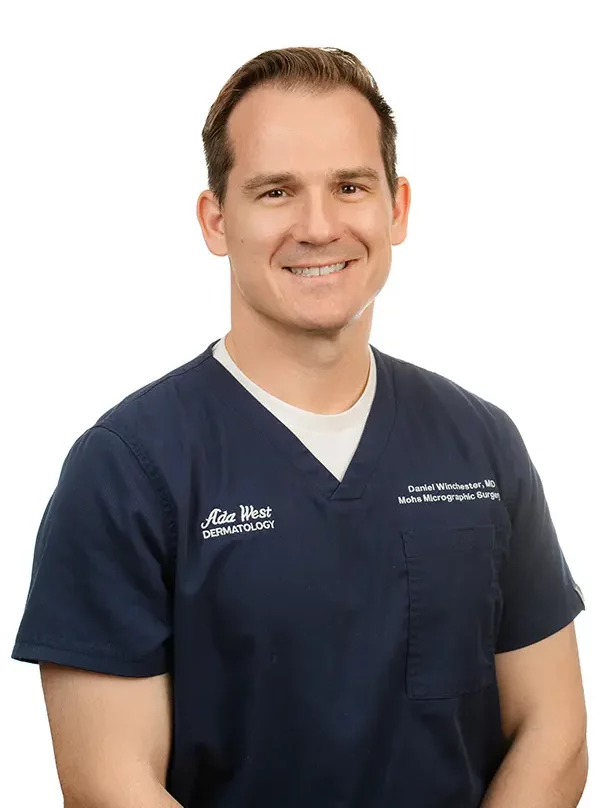
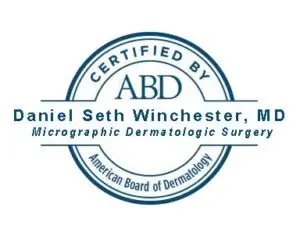
Dr. Daniel Winchester is a native of Ucon, Idaho. He grew up farming and visiting his grandparents on their small farm in Nampa. He graduated Cum Laude from Brigham Young University and was selected to speak at graduation. At BYU he was awarded the Edwin Hinckley Scholarship as the top student from the Life Sciences Department and served as the Executive Director of the BYU Student Association. He then attended the University of Utah School of Medicine where he received the Presidential Scholarship. There he graduated as one of the top of his class as a member of the Alpha Omega Alpha Honor Medical Society
Read MoreAfter twenty-five invitations to interview for residency, Dr. Winchester was selected to train at the world renowned Mayo Clinic. There he completed both his dermatology residency and Mohs micrographic surgery, dermatologic oncology, and facial reconstructive surgery fellowship. As a fellowship-trained micrographic and reconstructive surgeon he was required to perform over a thousand cases under the direct supervision of world experts at the Mayo Clinic. This fellowship is accredited by the American College of Mohs Surgery and the AMA’s Council of Graduate Medical Education and makes Dr. Winchester one of only four such Mohs surgeons in the Treasure Valley along with Dr. Thorpe.
Dr. Winchester has published numerous research articles, including some of the largest studies to date on rare skin cancers and their outcomes. He has presented them around the globe. He was also selected as the American Academy of Dermatology liaison to Brazil. He continues to investigate areas of interest such as aggressive skin cancers and reconstructive surgery.
Dr. Winchester has served on committees and leadership roles for the American College of Mohs Surgery and the American Academy of Dermatology. He lives in Boise with his wife and three children. He is an avid reader and is fluent in Spanish and Portuguese.
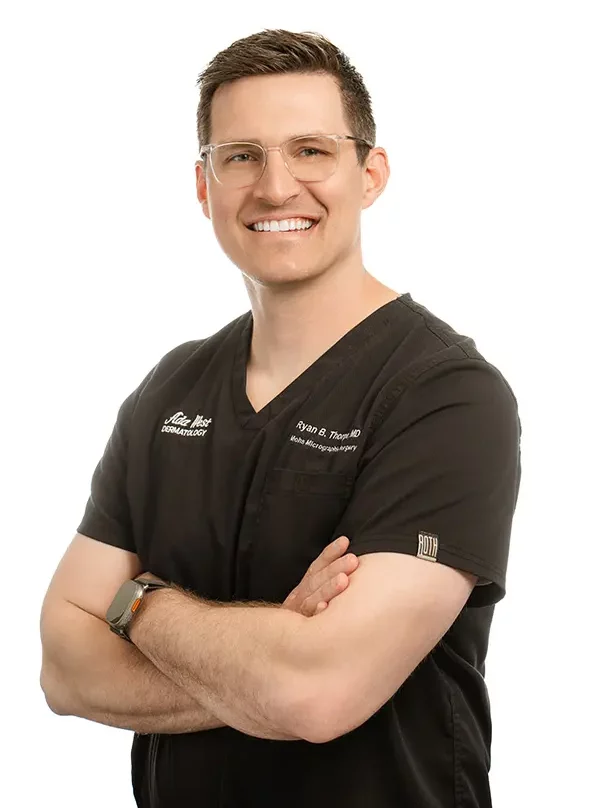
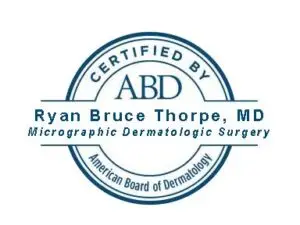
Dr. Ryan Thorpe is a native of the Dallas/Ft. Worth area and an Eagle Scout. He graduated magna cum laude from Brigham Young University with a degree in Accounting during which he won the National Deloitte Tax Competition and was a recipient of the prestigious Gordon B. Hinckley Presidential Scholarship out of high school. He subsequently graduated from the University of Texas Southwestern Medical School at the top of his class, served as President of the Alpha Omega Alpha honor society, and was honored with the President’s Volunteer Service Award. He then completed dermatology residency at Duke University where he served as the chief resident.
Read MoreDr. Thorpe has trained under the direction of world renowned Mohs surgeons Drs. John Zitelli and David Brodland in the Mohs Surgery, Cutaneous Oncology, and Facial Plastic and Reconstructive Surgery Fellowship. This unique training is officially approved by the American College of Mohs Surgery and the AMA’s Accreditation Council of Graduate Medical Education. Dr. Thorpe has authored several scientific articles in peer-reviewed journals regarding cutaneous oncology and complex facial reconstruction as well as several chapters in dermatology textbooks. He has presented in national, regional, and local academic meetings, including being awarded the 1st place resident presentation at the North Carolina Dermatology Association.
Most recently, in conjunction with Castle Biosciences, he was the lead investigator developing a melanoma nomogram utilizing gene expression profiling with other clinicopathologic risk factors to better predict the clinical course of melanoma patients and now has a mobile app in development. This project has resulted in a manuscript in process for publication as well as a presentation at the annual American Society of Dermatologic Surgery meeting and invitations to present at American Academy of Dermatology and American College of Mohs Surgery meetings.
He lives in Meridian with his wife and five children and enjoys family, food, sports, outdoors, and church.
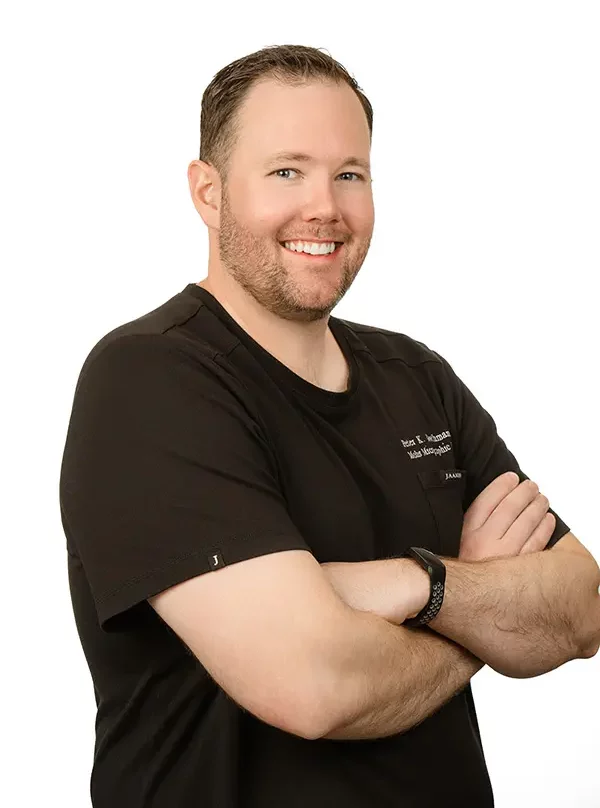
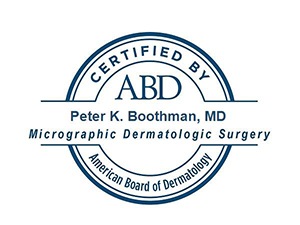
Dr. Boothman is a board-certified dermatologist and one of the nation’s few dual fellowship-trained Mohs and reconstructive cosmetic surgeons. A native of eastern Washington, he grew up between the wheat fields of the Palouse and the orchards of the Yakima Valley.
He attended Washington State University, where he graduated Magna Cum Laude and Phi Beta Kappa with a degree in Zoology. He then earned his medical doctorate from the University of Washington School of Medicine, subsequently completing his transitional-year internship at Providence Sacred Heart Medical Center in Spokane, Washington.
Read MoreDr. Boothman then moved to the South, completing his advanced clinical trials research fellowship and Dermatology Residency at the University of Alabama Birmingham, where he received world-class training in general dermatology, dermatologic surgery, and cosmetics.
He then completed his Mohs Micrographic Surgery and Dermatologic Oncology Fellowship at Surgical Dermatology Group under the direction of Dr. Christopher Harmon, one of the nation’s most complex and highest-volume surgical programs. This unique training is officially approved by the American College of Mohs Surgery and the Accreditation Council of Graduate Medical Education.
Subsequently, he went on to complete the cutting-edge ASDS-approved Cosmetic Dermatologic Surgery fellowship under the instruction of Dr. Cameron Chesnut and Clinic 5C in Spokane, Washington. During this fellowship, he was comprehensively trained in the art of advanced facial plastic and cosmetic surgery, neurotoxins, injectable fillers, fat transfer, lasers, radiofrequency devices, hair restoration and transplantation, ultrasound-guided filler dissolution, and regenerative cosmetic techniques. Dr. Boothman enjoys both the medical and cosmetic aspects of procedural dermatology and is excited to bring his unique skill set to serve the medical and cosmetic needs of the people of Idaho.
Dr. Boothman is an outdoor enthusiast, history buff, and trivia master, with a special interest in aviation and space. He most enjoys spending time with his wife and four children.


Pam came in with a spot on her nose. She didn’t think it was a serious problem at first. “You know occasionally you have a pimple or something. This was something like that, and I
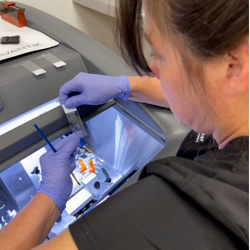

This is an example of how Mohs surgery works. Mohs surgery is a precise surgical technique used to treat skin cancer— normally utilized for certain cases on the face/hand or with specific types of cancer.
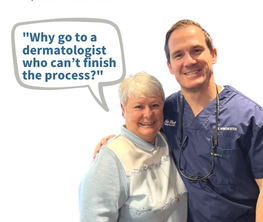

Our patient, Jan, started seeing a dermatologist almost 40 years ago– for skin cancer. Because her genetic predisposition, fair skin, and childhood sunburns by the lake compounded her likelihood of skin cancer, she has had
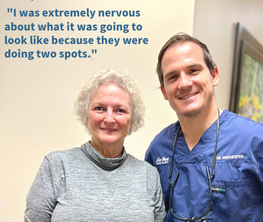

Our fair-skinned patient, Kathy, had basal cell carcinoma on her face 30 years ago in another state, and although her doctor then used Mohs surgery techniques to remove the cancer, she still saw the scar
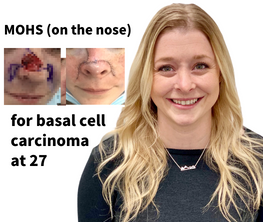

Abigail, 27, noticed a spot on her nose that seemed to come from out of nowhere. She ignored it for a while, until she decided to have a dermatologist check. “The first dermatologist I
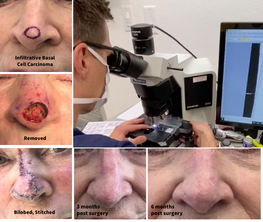

Sometimes skin cancer can appear so tiny, but actually be growing much bigger underneath the surface. For example, the skin cancer Susan Drew had removed appeared as the tiniest little bump on the end of


